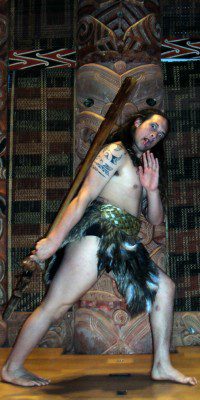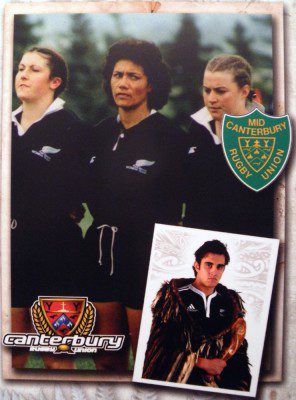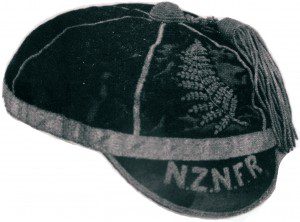
“The silver fern is the perfect symbol to represent a New Zealand rugby team – as one frond withers and dies, another takes its place.” – Thomas Rangiwahia Ellison
AUCKLAND: NZ – The All Blacks have a strong connection with New Zealand’s indigenous Maori people. Without it, the world-class rugby side wouldn’t be the same. Without it, they wouldn’t breathe fire. “Ha ka” — which can be translated as “breathing fire” — is the traditional war cry of the Maori. For the All Blacks, the Haka has become a pregame staple. Before each game the All Blacks perform the Haka as a war dance, in homage to the Maori and to fire the team up as it begins a test.
“In terms of the All Blacks, while they play the sport, they represent their ancestors. The rugby itself, is just a sport, but doing the Haka before it, the word Ha, that is the breath of life, Ka is anger and adrenaline inside you. So Ha + Ka together [is] the breath of anger, basically. So our warriors used the Haka to psych themselves up before battle. The All Blacks use it [for their] battle as well. They use the Haka to get ready for the game. It is kind of like a fast adrenalin warmup.” – Maori dancer Karena Koria, from the Auckland War Memorial Museum.
But the Haka’s journey to the forefront of international rugby has taken many twists and turns, and in fact, “Haka” has many different meanings:
The Land of the Long White Cloud: The Polynesian Maori people reached the shores of the land they call Aotearoa, or Land of the Long White Cloud, in the 13th century in canoe migrations from Eastern Polynesia. Their developed in isolation until European contacts in 1642. The Land of the Long White Cloud became a colony of the British Empire in 1840 with the signing of the controversial Treaty of Waitangi, which recognized Maori land ownership right and self-governance… to some extent, while also bringing the land under the governance of the British Crown. The word Maori, meaning “normal” in Maori language, was adapted to signify the Maori population in contrast to the Pakeha, or fair-skinned voyager, referring to the British. Maori, Samoans, Tongans or Fijians, occupying the scattered islands of the Pacific Ocean, were traditionally warrior tribal nations, tending to have strongly built physiques necessary for the long oceanic canoe migration as well as closely knit tribal communities. With the game of rugby emphasizing strong physicality and team performance, the Maori youth took to it quickly after being introduced by European immigrants in the 1880s.
Maori traditions lead to rugby success: From these early years, there has been a sense of genealogy central to Maori rugby when considering the passing down of a number or a jersey from one player to the next. Since the inaugural 1888 Natives Tour, the Maori were central to the creation of the All Blacks concept. The black jersey and the iconic silver fern symbols are all derived from Maori symbols. Thomas Rangiwahia Ellison (1867-1904), leader of the first NZ rugby team that toured Australia in 1893 – and the first lawyer of Maori descent – proposed the black colours with the silver fern symbol. According to Ellison:
“The silver fern is the perfect symbol to represent a New Zealand rugby team – as one frond withers and dies, another takes its place.”
That formula has worked for 127 years. As All Blacks wing Hosea Gear puts it, “Being part of the same bloodline just brings us together. We’re that much tighter, that much closer than probably your average side.”

The Haka: which one do you mean? While the All Blacks usually perform the Ka Mate, there are thousands of versions that include: threatening movements, gestures and mimics, facial contortions, poking out of the tongue, thumping of feet. These Haka can signify not only a war chant, but also welcoming of guests, or celebration of events or funeral events. Hakas can be both performed by men and women, while women tend to restrict their movement and chanting and rely more on opening their eyes in a threatening manner. Since 1906 the Ka Mate, a Haka taparahi or ceremonial Haka signifying Chief Te Rauparaha’s escape from an enemy tribe – or life over death – has been used by the All Blacks. It starts with, “Ka Mate, Ka Mate, Ka Ora, Ka Ora…” meaning, “This is life, This is life, This is death, This is death…” recalling the anxieties of the chief hiding in a dark pit until an ally chief brought sunlight and safety with him.
BUT… In 2005 as an element of surprise, the All Blacks incorporated the Haka Kapa o Pango (The Team in Black). Debuting against South Africa in a 2005 Tri-Nations game in Dunedin, with captain Tana Umaga leading, the aggressive Haka ends with a much-criticized imitation of throat-cutting – refering to the Maori concept of hauora, or drawing the deep breath of life. The ending gesture was temporarily omitted from the choreography in 2007.
“The reason why they changed to Kapa o Pango, the new Haka, it was written to suit the All Blacks, because the Ka Mate Haka itself doesn’t relate to the All Blacks, it talks about one of our chiefs called Puhuru, who ran away from a group of British and got trapped into a hole, so the words ‘Ka Mate, Ka Mate, Ka Ora, Ka Ora,’ he was thinking in his head, ‘Am I gonna die, am I gonna live?’ So that Haka is from a totally different story or topic, nothing related to the All Blacks.” explains Koria.

Ownership of the Haka is another controversial issue and one in which Rugby Lawyer Jim Herschlein is vexed by. The Treaty of Waitangi, on which the New Zealand constitution is based, gives full protection of Maori treasures, including non-tangible cultural and linguistic ones. Maori representatives argue that Maori heritage should not be exploited or displayed without prior agreement with traditional owners of the symbols or cultural assets. International advertising campaigns promoting New Zealand and its products often exploit Maori symbols, often without the proper understanding of their significance or meaning. “Lawyers can mess up a rock fight.” says Herschlein, a New York Rugby Club member, with disgust. Indeed. Most recently, All Blacks flyhalf Dan Carter’s underwear advertisement for Jockey was criticized for displaying Maori symbols without permission from traditional right holders.
“When using Maori symbols, some people actually don’t know what they are doing or what they are actually doing the Haka about, even in the All Blacks, which is a pity,” Koria said. “They should have more knowledge of what they are doing, so they would know what is the significance of it all.”
Tomorrow, an Eagle warrior, Team USA 7s Captain Matthew Hawkins, is back with regular Thursday piece.


